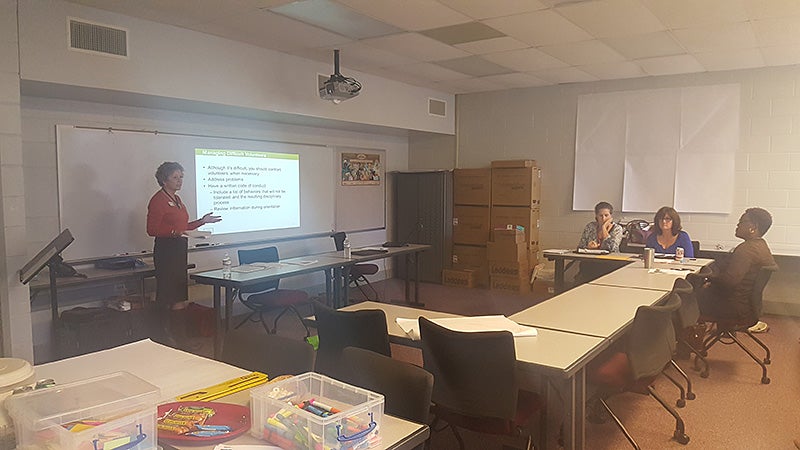Group looks to help local students with federal aid
Published 11:27 am Thursday, November 17, 2016

- Alabama Possible, a statewide non-profit organization that removes barriers to prosperity through education, collaboration and advocacy, conducted a workshop Nov. 4 titled “Cash for College,” for guidance counselors from high schools throughout Shelby County. (Contributed)
By EMILY REED / Special to the Reporter
ALABASTER – Guidance counselors from high schools throughout Shelby County attended a training seminar on Nov. 4 to learn tips to help boost free application for federal student aid completion rates.
Alabama Possible, a statewide non-profit organization that removes barriers to prosperity through education, collaboration and advocacy, conducted the workshop titled “Cash for College,” held at the Instructional Services Center on U.S. 31 in Alabaster.
“We wanted to partner with schools in Shelby County and really spread the message to them that there is financial aid available for kids who want to go to college,” Alabama Possible Executive Director Kristina Scott said. “What we see is that a lot of families don’t think they can receive financial aid, and we want to encourage families to go ahead and apply.”
Currently, 62 percent of jobs will require a post-secondary degree or credential by 2020, Scott said with 37 percent of working age adults having a post-secondary degree or credential.
“We are focusing on low income, first generation, college students,” Scott said. “We are trying to build the understanding that there is a need for post-secondary education. We want to make sure that every student that plans to go to college in the fall is completing their FAFSA their forms.”
Scott said as time has progressed more companies are wanting to hire individuals with a post-secondary education.
“A generation or two ago you could graduate from high school and immediately go to the workforce,” Scott said. “Now, the nature of work has really changed. Today it helps to have knowledge in robotics, and run a computer and be able to do math quickly. The nature of work has changed so much that we are seeing schools making the pivot to catch up to these companies that are hiring.”
Scott said a common deterrent to students and parents filling out and completing FAFSA forms is the reputation that FAFSA forms are considered “difficult” and harder than tax forms.
“We are just building a system to assist and support families as they complete the form,” Scott said. “Instead of waiting until Jan. 1, they can start filling them out starting Oct. 1, and families can now use 2015 tax data, which is a new change that has made things much easier for families filling out their FAFSA forms.”
Ashleigh Staples, statewide initiatives coordinator for Alabama Possible, provided FAFSA completion rates broken down by schools in Shelby County through the end of the 2015-2016 school year (May 27, 2016). Staples data showed that Calera had a 36 percent completion rate; Chelsea, 45 percent, Helena, 37 percent; Montevallo, 40 percent; Oak Mountain, 39 percent; Shelby County High School, 42 percent and Vincent, 36 percent.
“Shelby County has changed so much,” Scott said. “We really want to work to equip the students and young people for the jobs of tomorrow, and today and to really ensure that they can have a job to support a family and have a middle class life. It is far easier to go to college right out of high school than it is to go to the workforce and try to return to college later in life.”
For more information about completing a FAFSA or filling out the form, visit Cashforcollegealabama.org.









